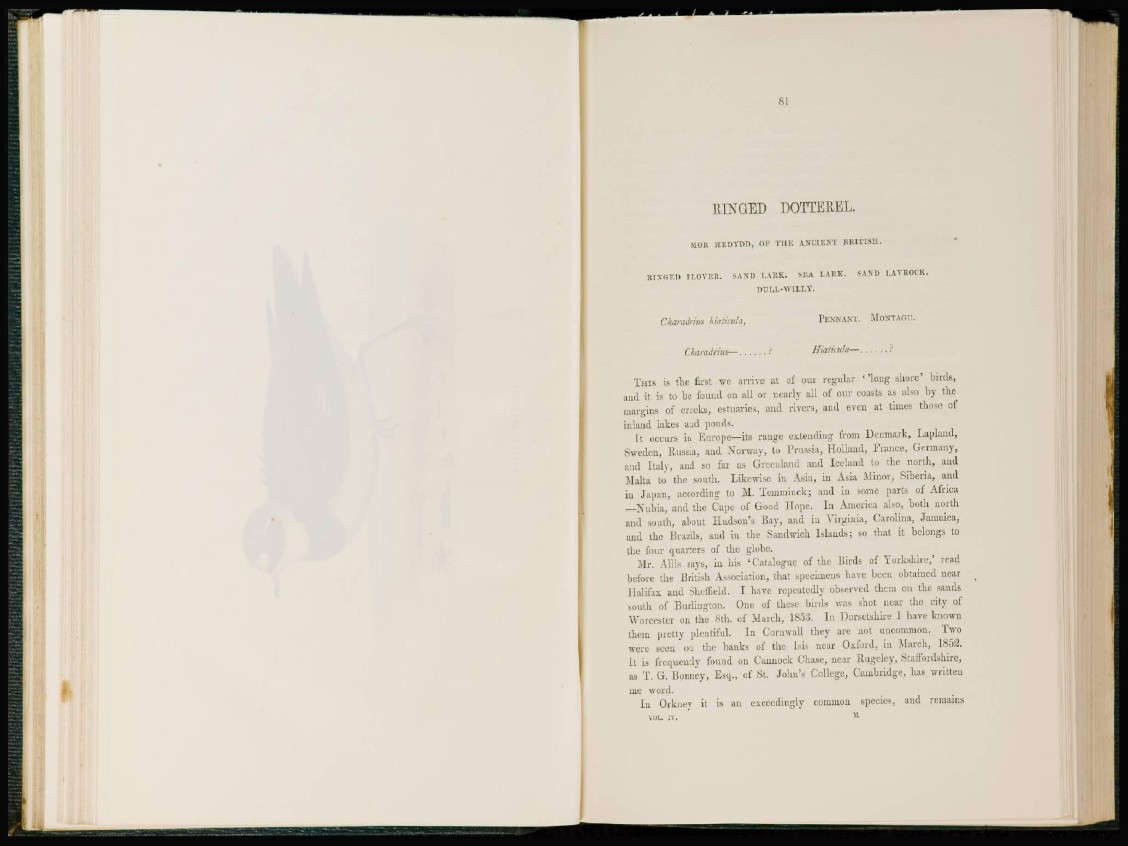
RINGED DOTTEREL.
MOR HEDYDD, OF THE ANCIENT BRITISH.
RINGED PLOVER. SAND LARK. SEA LARK. SAND LAVROCK.
DOLL-WILLY.
Charadrius hhtiaUa, PENNANT. MONTAGU.
Charadrius— ? Hiaiktda— ?
THIS is the first we arrive at of our regular ( ' l o n g shore1 birds,
and it is to b e found on all or nearly all of our coasts as also by the
margins of creeks, estuaries, and rivers, and even at times those of
inland lakes and ponds.
It occurs in Europe—its range extending from Denmark, Lapland,
Sweden, Russia, and Norway, to Prussia, Holland, Fiance, Germany,
and Italy, and so far as Greenland and Iceland to the north, and
Malta to the south. Likewise in Asia, in Asia Minor, Siberia, and
in Japan, according to M. Temminck; and in some parts of Africa
—Nubia, and the Cape of Good Hope. In America also, both north
and south, about Hudson's Bay, and in Virginia, Carolina, Jamaica,
and ilie Brazils, and in the Sandwich Islands; so that it belongs to
the four quarters of the globe.
Mr. Allis says, in his ' Catalogue of the Birds of Yorkshire,' read
before the British Association, that specimens have been obtained near
Halifax and Sheffield. I have repeatedly observed them on the sands
south of Burlington. One of these birds was shot near the city of
Worcester on the 8th. of March, 1858. In Dorsetshire I have known
them pretty plentiful. In Cornwall they are not uncommon. Two
were seen on the banks of the Isis near Oxford, in March, 1852.
It is frequently found on Cannock Chase, near llugcley, Staffordshire,
as T. G. Bonney, Esq., of St. John's College, Cambridge, has written
me word.
I n Orkney it is an exceedingly common species, and remains
VUL. IV. M.